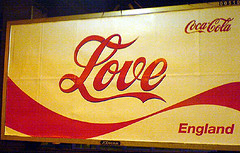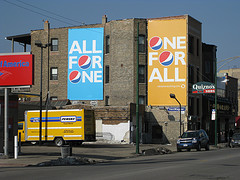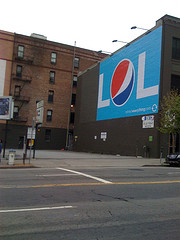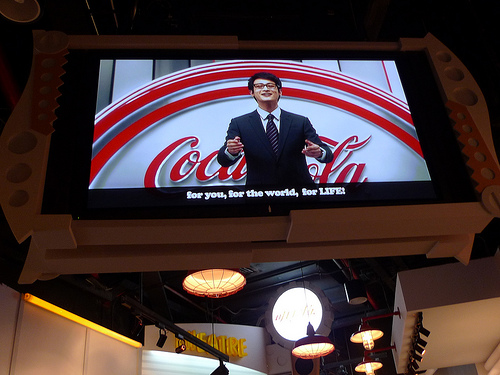3D printing vs mass production: Part II Manufacturing Complexity and Marketing Promise
This is the second post in a series covering 3D printing versus mass production. You can find the first here. The other parts are: The Power of Unique, Everything you own Sucks and Wish Fulfillment. This post deals with the increase in manufacturing complexity that accompanies mass produced products. Mass production is in my opinion gradually undermining its own strengths by focusing not on increased utility for consumers but rather on things such as increased complexity. At the same time unrealistic and product unrelated promises by marketing create a gap between what products deliver and what they promise.
II. Manufacturing Complexity and Marketing Promise
The increase in the complexity of the cheap consumer products we can buy today is staggering. I can now buy a 12 megapixel camera with12. a 3 inch LCD and 3X digital zoom for $99. If you read this post in a few months the same camera model will have 14 or 20 megapixel. I can remember how limited and expensive the first digital cameras were. But, this statement about the 12 MP camera will be made meaningless in months as the incredible level of competition in digital cameras results in leaps forward in price, software, mega pixel and above all complexity. In their hunger for higher resolution, Mass Production camera companies continually increase the amount of resources that they need to consume in order to achieve current revenues. Indeed in my opinion the search for “higher resolution” in televisions, computers, computer games, consoles, phones and cameras is one of the single most environmentally destructive things we do as humans. It forces entire industries to have to make more complicated things that eat up more and more of the earth”s resources. And they do this because we by now expect every new thing to have a higher resolution than the thing it replaces. That and increased megapixel is a nice easy thing to market to people. More resolution translates into bigger storage and higher bandwidth usage and the knock on effects of higher resolution permeate industry. But, why exactly do I even want a higher resolution camera?
The Resolution Trap
I have a four year old Nikon D40. It has 6.9 Megapixel, an amount that should be appearing in camera phones soon. Over the past years Nikon has replaced my camera so often that I am currently unable to discover which camera in Nikon”s line up is its successor. I can understand that my camera is noticeably better than previous cameras. I can see how more zoom and software might help me in some situations take better pictures, but the megapixels themselves?
Will seeing the pimples on my face really give me a better holiday snapshot? Can I really see the difference between images at different resolutions? Ken Rockwell explains the limitations of megapixels elegantly here. I fail to see how any increase in megapixel beyond my current camera could translate into better pictures for me.
The resolution trap is to me an example of mass production painting itself into a corner by increasing the level of manufacturing complexity to unsustainable levels while failing to deliver increased utility for consumers.
The world is a village/supply chain
The fern like global reaches of this supply chain and fierce competition between the players in it “make it so” that we get better digital cameras each season. Millions of people dig up the earth, pump oil, refine it, make it into plastic, make it into components, assemble it, and assemble it into more complex parts ship to china, ship to Indonesia, together with Ghanaian wood pulp, American chips, Taiwanese boards, Swedish design and a Japanese seal of approval. Mass manufacturing is the most staggeringly complex system that man has ever devised. A concert of a million invisible hands clapping in concert. Your mobile phone is a Gizeh Pyramid construction project with parts and materials from 10 countries and raw materials sourced from Australia to Saudi Arabia. Only this pyramid has to be cheaper and do more every few months. You might think that you travel but I guarantee you, your camera has already logged more Frequent Flier miles than most ever will. The most well traveled thing in any American household is probably the laptop. The collective journey that all of its constituent parts have undertaken in order to be reformed into your Asus or Dell is staggering. It is also clearly, unsustainable.
Marketing Promise
The other culprit of the self defeating Mass Manufacturing revolution is Marketing Promise. Marketing was invented because factory owners worried that their high throughput, low unit cost factories would run out of paying customers for their products. They worried that once they had sold everyone two pairs of shoes they would go out of business. So marketeers began to create demand and sell these products with promises. At first their promises were centered on the features of the products themselves but soon marketeers started promising ever more outlandish things completely unrelated to the product. Each new toothpaste was going to make you even more beautiful and even happier than the last. And because marketing is a big business now and the inundated herds seem oblivious to the most obvious messages the promises marketing makes will only become more and more outlandish and more and more unrelated to the products. Already much current advertising seems to have reached a point beyond satire.
If they  just talking about increases in megapixel, the marketing folk would just talk about the products and the marketing message would be centered on the product. But, they don”t do that. about lathering on layer after layer of imagined brand value on any product they can find. Its about getting this convincing message out to as many people as is possible. As this imagined value, supported only by marketeers promises, piles on more and more costs are added to a product in a search of ever higher margins. By now much of our lives are spent watching advertising and its becoming increasingly clear that even though there is a staggering increase in the sophistication and performance of many products these products are still falling short of the promises made in their marketing. Its incredible that we can go from 1 to 2 to 3 to 12 to 20 megapixel with falling prices in cameras. But, instead of lauding that, the camera manufacturers promise us better birthdays, more fun, more friends. Their lies and exaggerations will only increase in severity as time goes on. As they promise more, mass production has to work harder to increase functionality but with the marketing promising “happiness for $99″ mass production”s best efforts are doomed to fall short. A camera manufacturer is thus trapped into consuming more and more of the earth”s resources in a vain attempt to please a consumer with a better camera while that consumer is waiting for their promised happiness. We must fess up to the truth, a camera will never make us happy.
To be continued soon…
Images, Creative Commons Attribution: MPD01605, Warrenski, Jax60, Holster, Achimh, Spensatron 5000, Factoryjoe, Coolinsights,
Recommended Articles
No related posts.










